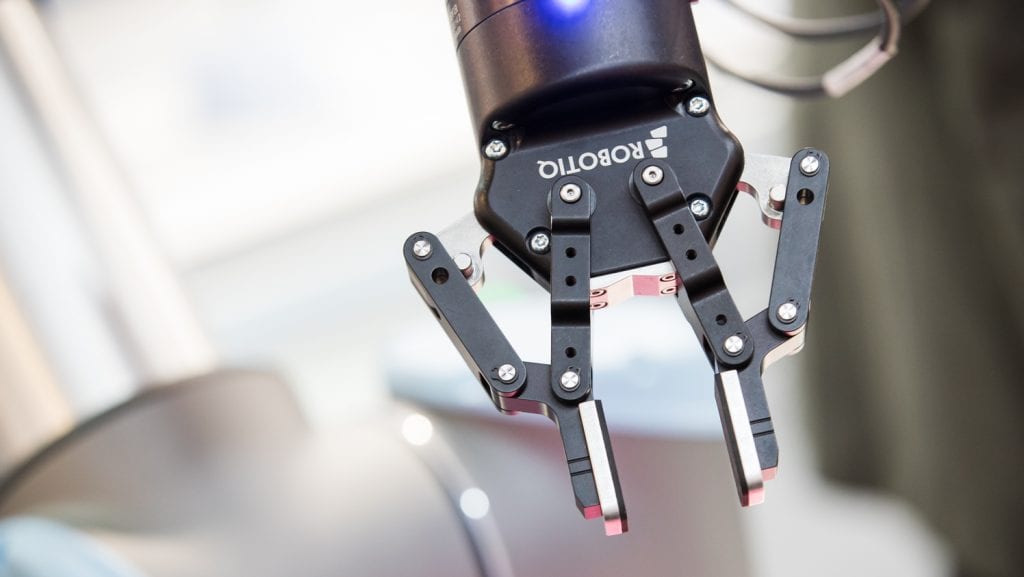Automation Is Coming: How to Prepare Our Students
March 27, 2018
Economists forecast millions of jobs being lost to automation over the next two decades, affecting all sectors of the economy. Here’s what schools need to train students for in a rapidly-changing job market.
Ready or not, automation is coming. A McKinsey report from 2017 estimates that by 2030, technology will replace 73 million jobs. That staggering figure is matched by the sheer scope of this change. Where previous technological advances displaced mostly unskilled laborers, the automation revolution will affect everyone from truck drivers to radiologists.
This isn’t necessarily as bad as it sounds. What the economist Joseph Schumpeter called “creative destruction” of this kind of change creates as many opportunities as it destroys. So long as the economy continues to grow, new jobs will replace the old ones.
Still, this sweeping change will usher in a period of social dislocation. Adapting to these new realities won’t be easy. To help students survive in this environment, educators will have to help them develop new skill sets. As this Jack Ma video points out, the paradigms of the last two centuries can no longer prepare students to compete with machines. Everything must change. But how?
What Jobs Will Be Left in 20 Years?
Analysts suggest the best strategy to get students ready for the automation revolution is to focus on the jobs most likely to remain when the dust has settled. That means educators need to help prepare them for occupations that can’t be replaced by algorithms and robots.
On this front, a rare consensus has developed. James Manyika, Michael Chui, and Mehdi Miremadi, the researchers behind the McKinsey study, report the least likely positions to be automated are those involving social skills and emotional intelligence.
Jobs that include, “managing and developing people” (9%), designing and decision-making (18%), and interacting with clients and stakeholders (20%). In other words, the lifeline for job-seekers over the next twenty years will be mastery of human connection and “soft skills.”
What Schools Should Be Doing
If schools want to equip children for the future of work, they need to help students gain proficiency in abilities future employers demand. Bosses will be looking for employees with soft skills. In fact, they already are. Unfortunately, conventional approaches to teaching creativity, planning, and relationship skills aren’t working. As it presently stands, half of all employers feel potential hires lack these traits.
These developments invite debate an d careful planning, but it seems safe to hazard at least one prediction. The importance of social emotional learning – which targets such “soft skills” as social awareness, responsible decision-making, leadership, and respect – will continue to grow as the automation revolution takes hold. The job market is already reflecting this shift in priorities.
d careful planning, but it seems safe to hazard at least one prediction. The importance of social emotional learning – which targets such “soft skills” as social awareness, responsible decision-making, leadership, and respect – will continue to grow as the automation revolution takes hold. The job market is already reflecting this shift in priorities.
While SEL has always been a good investment, it is swiftly becoming an imperative. With sweeping changes on the horizon, it might make the difference between being ready or not for the future of work.
 Author: Ryan Woods, PhD, RW Contributor
Author: Ryan Woods, PhD, RW Contributor
Respectful Ways offers custom-tailored Social and Emotional Learning programs for elementary schools, middle schools and high schools. Take a look at our site and contact us for a free consultation.
Photos courtesy of Sharon Mollerus and untitled exhibitions, licensed under CC2.0
This entry was posted in SEL News. Bookmark the permalink.



 Our 1st graders loved the Be Kind: It Feels Good course. The Kindness Hunt and bucket filling activities were the best. Very engaging.
Our 1st graders loved the Be Kind: It Feels Good course. The Kindness Hunt and bucket filling activities were the best. Very engaging. The Bored, Get Creative module was perfect for our 4th graders pre-winter break. We talked about things they could do if “bored”.
The Bored, Get Creative module was perfect for our 4th graders pre-winter break. We talked about things they could do if “bored”.